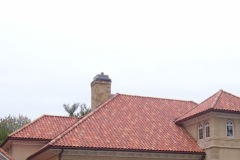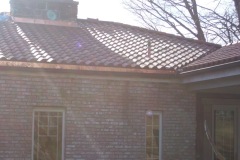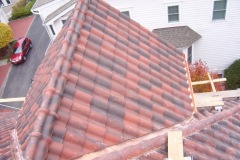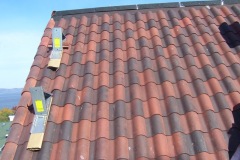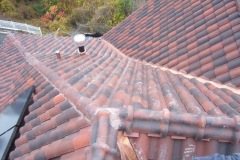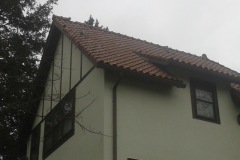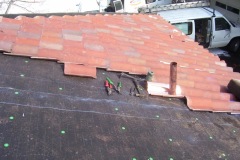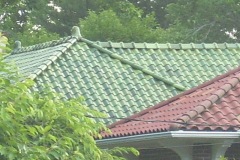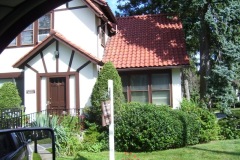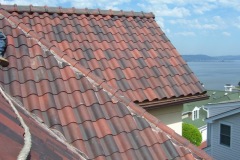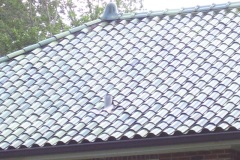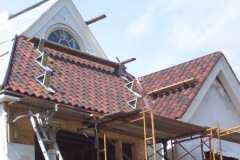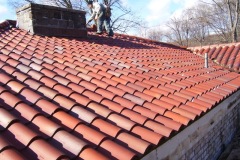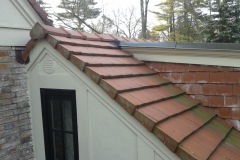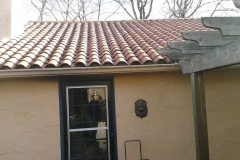TILE ROOFING
- Roof tiles are typically made from ceramic and clay
- There are several different styles (also referred to as shapes or profiles) of roof tiles.
- The interlocking Roman roof tile is flat in the middle and curves at one end so that it fits with the next roof tile.
- The rarer S-shape roof tiles, called Pantiles, interlock in a ridged pattern.
- Mission roof tiles are made of clay, semi-cylindrical in shape and laid in alternating convex and concave rows.
- With the use of nails, roof tiles are hung from the roof’s framework, typically in parallel rows, in a manner that has them overlapping to keep rainwater out and cover the nails.
- Depending on the quality of the material, tile roofs can last up to 200 years.
- With many available choices of style, shape, material, color and proper installation, the homeowner will enjoy many years of aesthetically appealing and highly efficient roofing tiles.
Spanish Tile
- Spanish tiles historically evolved from the old European buildings and western missions around the world. Their dramatic multi-dimensional and wavy design creates a graceful and bold look that is clean looking and smooth.
- The most popular Spanish tile is traditionally comprised of two pieces, although it is also available as a single piece.
- Although the Spanish tile is a classic, modern designs and techniques made its aesthetics versatile. It is available in a wide array of patterns, finishes, color blending options and architectural styles.
- Durable and long lasting, these tiles are a life-long solution for a sloped roof.
- Low slope roofs will typically need a waterproofing under layer.
- These tiles are made of incombustible material; they have a low moisture absorption rate. They are extremely durable and hard to break.
- Limited maintenance is required when used under normal conditions.
Ceramic
- Traditionally of the barrel type ceramic roof tiles, what is referred to today as cap and pan roof tiles.
- Natural and durable roofing product.
- This natural look may look historical and contemporary at the same time.
- The building industry has kept using ceramic roof tiles over the years and still does today, as it is a top quality product that keeps a traditional look while giving first rate roof performance.
Clay
- Clay roof tiles are available in a wide range of designs, colors, and textures.
- Clay roof tiles are able to withstand extreme outdoor conditions because they strengthen with ongoing exposure to the elements, making clay tiles a lasting and a cost-efficient roofing material.
- The clay roof tile will never fade, and its appearance brings distinguished character to a building.
- Clay tiles are heavy so some roofs may need additional support
- Clay roof tile installation is not very complicated with the current interlocking designs and the tiles are readily available due to high demand.
These Clay roof tiles are capable of blending in with architectural heritage and historical products, while also appealing to modern building applications.

